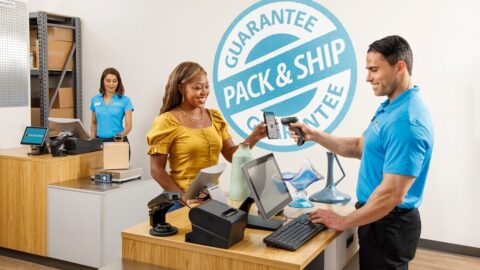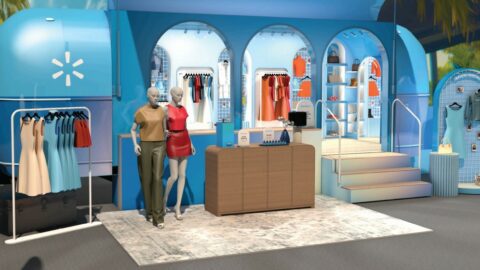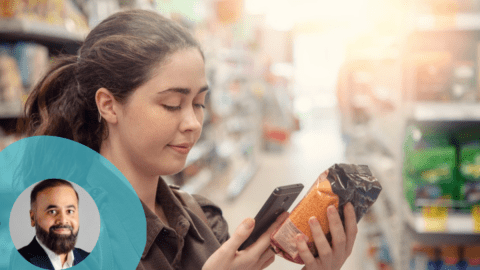Empowered, savvy shoppers are leveraging a variety of technologies and tools to make smarter shopping decisions every day through a variety of shopping channels. The convenience of online shopping has made it increasingly critical for retailers to find innovative ways to bring shoppers back into the brick-and-mortar store.
The store environment presents a number of challenges for retailers looking to keep shoppers at the shelves longer and increase basket size and shopping frequency. Those challenges include a plethora of SKUs, a variety of point of purchase (POP) displays and a growing number of private label products on the shelves.
The recent economic downturn has significantly impacted consumer preferences and shopping behavior. Private label (PL) brands have surged in popularity in response, and rather than trying to mirror competing brands, retailers are moving to develop packaging that promote the private brand as a first-choice alternative.
As retailers have committed to more aggressive efforts in order to drive increased revenue, private label initiatives are a money-making strategy, offering greater margin than other brands. But in order to master the private label marketplace, retailers must now realize that private label has become less about price and more about quality and brand image.
“Private label is a mature concept in North America,” noted Ralph Williams, Director, Strategic Services at JDA Software. “More consumers are willing to try PL products as they are confident in their ability to make a price value evaluation of each product. In the current economic environment, more consumers are willing to sacrifice quality for price…Store brand image is no longer seen as a pure price play.”
Understanding Shopper Patterns
While retailers have long emphasized the importance of harvesting customer relationship management (CRM) data for more efficient marketing and selling tactics, it has become imperative to understand shopper patterns and preferences to present the right offer at the right time.
“The retail environment is set up in a way that they make us walk by certain traffic patterns to induce our purchasing behavior,” noted Terri Goldstein, President of The Goldstein Group, a New York-based branding consulting firm. “I call it ‘supermarket seduction.’ The more that retailers can understand consumers, the more they can distract them and entice the with a whole traffic flow that gets them to their destination point.”
Additionally, the “touchability” of products is a major factor driving purchase decision. According to ShopperSense research, 90% of the time when a consumer touches the products they will buy it.
Technologies Drive “Touchability”
Retailers are pulling out all the stops to drive in-store interest among shoppers, and to engage them at the moment of decision. The following are examples of technologies designed to keep the consumer at the shelf longer, and retailers using those technologies.
- Shelf Talkers. Powered by technology from MyWebGrocer, ShopRite utilizes shelf talker technology to spread the word in-store about functionality that enables customers to access online specials and create digital shopping lists from their smartphones.
- QR Codes. Using Scanbuy’s ScanLife system, The Home Depot is able to edit and customize the codes to create new content without having to print new marketing materials.
- SMS Short Codes. Tapping technology from direct digital marketing services provider Knotice, Fender has placed rebate tags with a short code on qualifying Fender Hot Rod Amplifier products. After purchasing the product, consumers text the call-to-action to a short code to fill out and submit a rebate form for free products.
Creative Tactics Ease In-Store Navigation
With brand proliferation, it is difficult for consumers to be knowledgeable about the brand quality equation for infrequently purchased categories. Retailers are taking more innovative approaches to help streamline shopping decisions.
- GNC color-codes shelves based on category
- A Swedish retailer color-codes the shelf tags for the products (“good”-pink; “better”-green, “best”-blue).
- One Chilean retailer uses different colored balloons to delineate in store departments.
“Make it easy for the consumer to navigate your store,” Williams noted. “If the section profiles are too high, it is difficult for the consumer to get to the section they want. This is especially true for retail locations that are shopped less frequently.”
Shopper Sense Principal and Independent Shopper Insights Strategist Lily Lev-Glick pointed to three key components that influence the “moment of truth:”
- Shopability: To provide an overall satisfying shopping experience, retailers must ensure that shoppers can easily access desired product information, particularly in comparison to other products.
- Findability: Research shows that if shoppers cannot find a product between three and five seconds, they move on to another category or brand. Retailers must ensure that products are easily findable and accessible.
- Relevance: In-store messaging is such a critical component of a positive shopping because it often is a precursor to the product information shoppers see, and can influence their navigational process. The most dominant message should be very strategically placed and of the most relevance.
Connecting Front- And Back-End Operations
Optimization solutions can help retailers’ improve merchandising and shelf presentation at the front end, including space optimization, merchandising optimization and marketing optimization. Additionally, integrated systems help retailers increase back-end efficiency to ensure internal alignment, thus providing a more streamlined front-end approach to customer touch points.
“If you don’t have science or optimization, you’re only really enabled to manage averages,” said Andrea Morgan-Vandome, VP of Strategy, Oracle Retail. “It’s very difficult to understand the customers’ processes. There’s a lot of information out there. Optimization helps retailers understand the nuances of how one product sells versus another one and how that differs with different groups of customers and where they’re shopping. It allows the retailer to understand assorting and arranging decisions and understand what customers prefer to better target them.”
Moreover, the different silos of internal operations increasingly challenge retailers, which make 360-degree visibility more difficult.
“For a long time assortment and merchandising were siloed activities,” Williams said. “A buyer would head off to China to source products for the fall season with only a vague sense of whether there is enough space in stores for the products being acquired. Some of the new assortment applications are space aware. Now a buyer can either take the technology with them into the field to build their assortments as they buy or they can email prospective products to the assortment tool super users so they can determine before they commit that the product being sourced can be merchandised in store. More and more, this type of analysis is being based on forecast rather than past performance.”












